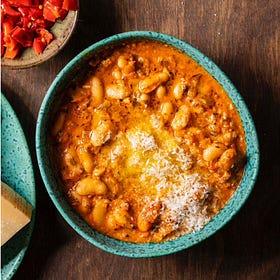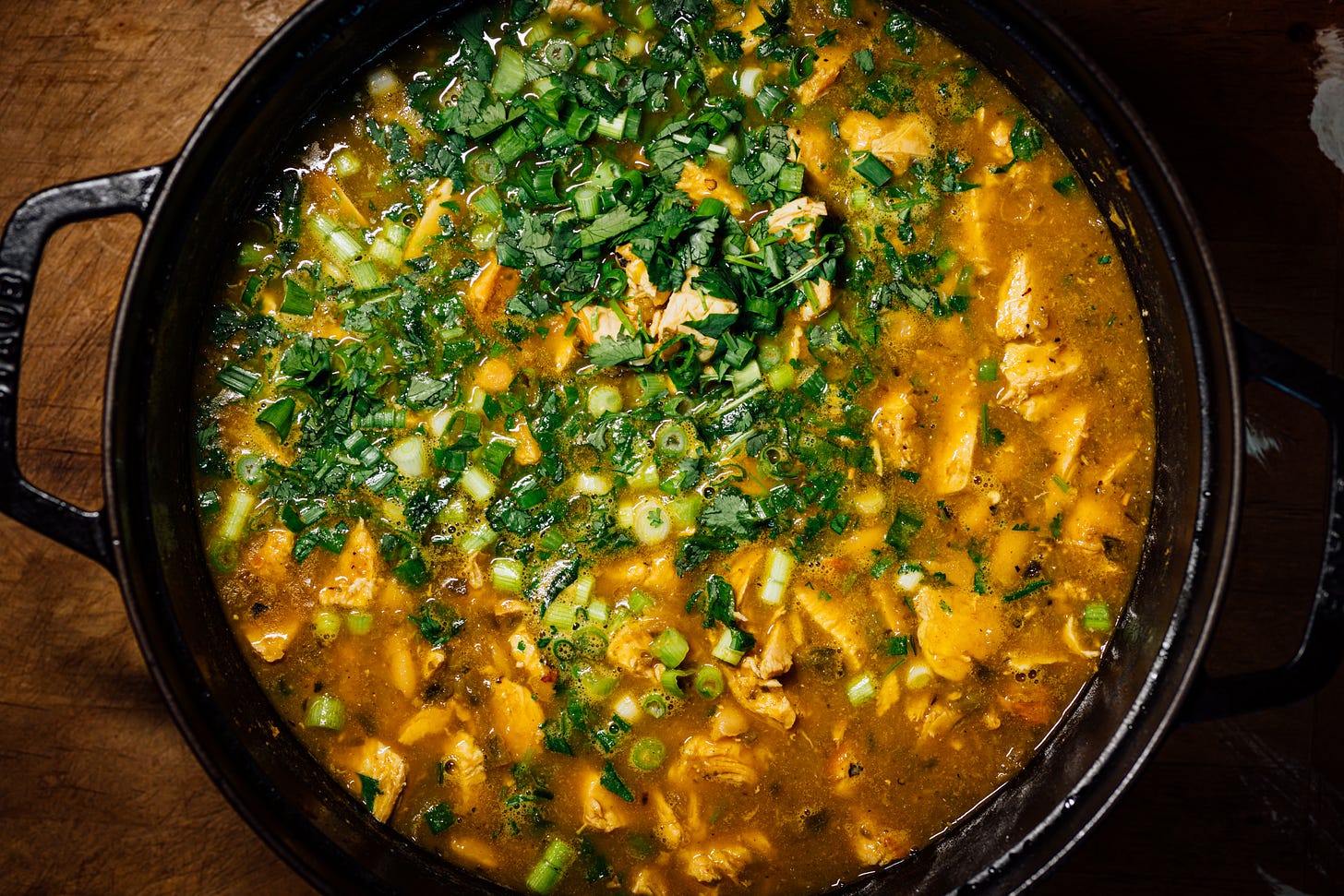What to Do With Too Much Ginger (and the Comfort Soup I’m Living On)
A step-by-step method to make ginger last longer, and that white bean and chicken chili? It’s the bowl I’ve been craving on repeat.
Welcome to The Flavor Files! 🎉This is where my love for cooking, flavor, and food science all come together—because delicious food is even better when you understand a little of the magic behind it.
Looking for more recipes? You’ll find them all at Nik Sharma Cooks.Still need a copy of my latest cookbook, Veg-Table? You can grab it here—it’s filled with veggie-
driven inspiration. 🌱✨
You might spot a few affiliate links sprinkled throughout this newsletter; they help keep the spice—and the science—flowing.
Now, let’s dive in. 🔥
Hi Friends,
If you missed last week’s May recipe digest and this month’s free recipes by me at America’s Test Kitchen - the iconic Chicken 65 from India and the Calabrian Chile White Beans, get them here.
Crispy Heat vs. Creamy Spice—This Week’s Flavor Faceoff
Welcome to The Flavor Files! 🎉This is where my love for cooking, flavor, and food science all come together—because delicious food is even better when you understand a little of the magic behind it.
Wishing a warm and heartfelt Mother’s Day to everyone celebrating, whether you're honoring a mother, remembering one, or navigating the day in your own way. May today bring comfort, gratitude, and love in all its beautiful forms.
This week, my friend Rie McClenny invited me to do one of my favorite things: cook, geek out, and eat. Hosted by J. Kenji López-Alt and Balmuda, we cooked in sync around their sleek new electric teppanyaki grill. I whipped up kimchi fried rice because nothing says “test-drive this grill” like fermented cabbage and sizzling rice. I need to get myself one of these grills because they’re fun to cook on, easy to work with, and clean.
You might’ve noticed things are looking a little different around here! I’ve been refreshing the newsletter, tidying things up, adding categories, and making it easier for you to find old favorites and stumble on something new and delicious. The full revamp should be completed by next week, so stay tuned!
How to Freeze Fresh Ginger (No Peeling Required)
Recently, I accidentally bought a massive bag of fresh ginger; far more than I could use in a week. Rather than let it go bad, I froze it. I rely on this method, especially when I pull ginger straight from the garden during harvest season. Freezing helps preserve its bold flavor, and bonus: frozen ginger grates like a dream. Here’s exactly how I do it.
You’ll Need:
Fresh ginger (no need to peel!)
A pot of boiling water
A large bowl filled with ice water
Kitchen towels
A baking sheet or plate
Freezer-safe bags (vacuum-sealed if possible)
Step-by-Step Instructions:
Rinse the ginger well under running water and gently scrub to remove dirt. Don’t peel it, I find the skin helps protect the flesh during freezing.
Prepare a pot of boiling water and a bowl of ice water. Line a baking sheet with clean kitchen towels.
Blanch the ginger by dropping them into the boiling water for 30 seconds; this step helps preserve its flavor and color.
Transfer the ginger to the ice water bath and cool immediately. Let it chill for about 5 minutes to stop the cooking process.
Dry thoroughly. Drain and spread the ginger out on the towel-lined baking sheet. Pat completely dry as moisture leads to freezer burn.
Arrange the ginger pieces on a clean baking sheet or plate, making sure they don’t touch. Freeze for about 1 hour until hardened.
Transfer to a freezer-safe bag, remove as much air as possible, and seal. Store in the freezer for up to 4 months.
Tips:
Slice, grate, or julienne the ginger before freezing, depending on how you plan to use it.
Frozen ginger is much easier to grate finely and great for stir-fries, teas, and dressings.
You don't need to worry about thawing before use. Just grab what you need and go ahead with your recipe.
This week’s recipe for my paid subscribers is comfort food in the form of this White Chilli with white beans and chicken. There are days when I need comfort to come quickly. Not the kind that simmers all afternoon, but that that arrives with a bit of ease, a little heat, and the steadying warmth of something deeply familiar. This soup is exactly that. Maybe it’s no surprise that it draws on the parallels between Indian and Mexican cooking, two cuisines that speak the same flavor language. Both celebrate fragrant spices and the slow layering of flavor. Both lean on bright acids like lime or tamarind to cut through richness and love to play with the fire of chiles. And yes, both are proudly rooted in the joy and ingenuity of street food. These similarities aren't coincidental. Colonization shaped the culinary landscapes of both countries; the Spanish in Mexico, the British, Dutch, Portuguese, and French in India, leaving behind a complicated legacy of migration, trade, and exchange. Ingredients like chiles, tomatoes, and potatoes crossed oceans and rewrote recipes. But somehow, even across continents, these two cuisines remain in conversation, with each other, and with those of us who cook and crave them.




